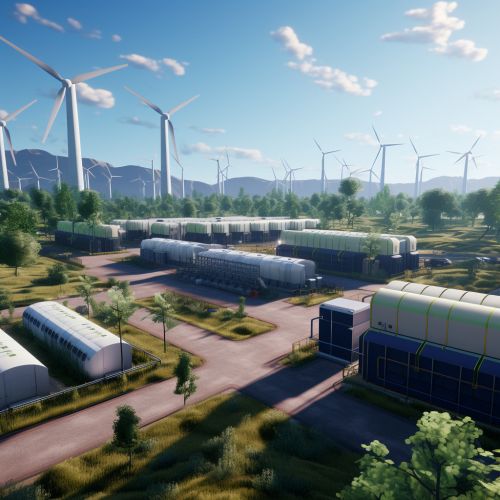Energy Storage
Introduction
Energy storage is the capture of energy produced at one time for use at a later time. A device that stores energy is generally called an accumulator or battery. Energy comes in multiple forms including radiation, chemical, gravitational potential, electrical potential, electricity, elevated temperature, latent heat and kinetic. Energy storage involves converting energy from forms that are difficult to store to more conveniently or economically storable forms.
Overview
The need for energy storage has become significant as the amount of electricity generated from renewable energy sources has been increasing. This is due to the fact that these sources are intermittent in nature and do not produce power continuously. The energy produced needs to be stored and used when there is a demand. Energy storage technologies can be broadly classified into mechanical, chemical, thermal and electrical.


Mechanical Energy Storage
Mechanical energy storage systems store energy in mechanical forms. One of the most common forms of mechanical energy storage is in the form of potential energy, where energy is stored in a system of forcefully separated mechanical devices (e.g., a raised weight or compressed spring).
Pumped-Storage Hydroelectricity
Pumped-storage hydroelectricity is a type of hydroelectric energy storage used by electric power systems for load balancing. The method stores energy in the form of gravitational potential energy of water, pumped from a lower elevation reservoir to a higher elevation.
Compressed Air Energy Storage
Compressed air energy storage (CAES) is a way to store energy for later use using compressed air. In this system, air is compressed and stored under pressure in an underground reservoir.
Chemical Energy Storage
Chemical energy storage includes technologies such as batteries and fuel cells. These technologies convert energy into a chemical form and store it.
Batteries
A battery is a device consisting of one or more electrochemical cells with external connections for powering electrical devices such as flashlights, mobile phones, and electric cars.
Fuel Cells
A fuel cell is a device that converts chemical potential energy (energy stored in molecular bonds) into electrical energy. A fuel cell does this by using fuel (usually hydrogen) and an oxidant (usually oxygen) which are constantly supplied to the cell.
Thermal Energy Storage
Thermal energy storage includes technologies that store thermal energy by heating or cooling a storage medium so that the stored energy can be used at a later time for heating and cooling applications and power generation.
Sensible Heat Storage
Sensible heat storage is the most common type of thermal energy storage. In this method, heat is stored by heating a medium, usually a solid or liquid.
Latent Heat Storage
Latent heat storage is a method of storing energy with a much higher energy density than sensible heat storage. It involves the use of phase change materials (PCMs) that absorb or release energy at a constant temperature during their phase change.
Electrical Energy Storage
Electrical energy storage systems store electricity for a period of time and later deliver it to consumers. These systems can be used to manage power during peak demand times, provide backup power during outages, and support renewable energy integration.
Capacitors
A capacitor is a device that stores electrical energy in an electric field. It is a passive electronic component with two terminals.
Superconducting Magnetic Energy Storage
Superconducting magnetic energy storage (SMES) systems store energy in the magnetic field created by the flow of direct current in a superconducting coil which has been cooled to a temperature below its superconducting critical temperature.
